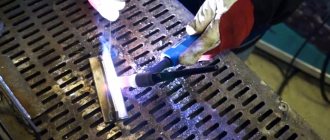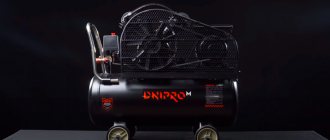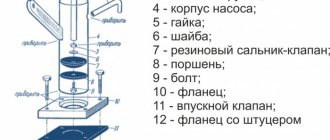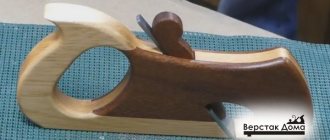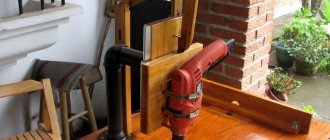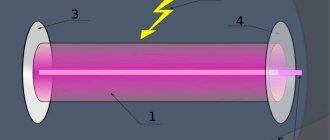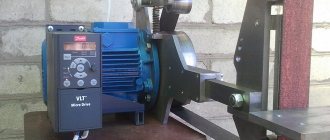Compressor equipment is usually used in conjunction with a device such as a dehumidifier.
There are no high-tech elements in it, so a simple version with mediocre characteristics can be made independently.
Let's see how and from what you can make a moisture separator for a compressor with your own hands.
DIY making
It is recommended to make a homemade device according to the drawings.
A do-it-yourself dehumidifier for a compressor is often made from an old unnecessary propane cylinder, pipes, and a fitting. The workpiece should be installed vertically in a stable position. A fitting is welded to the top (threaded connections can also be used). It is necessary for air supply. It is advisable to mount it near the edge of the cylinder. Then, you need to make an inlet pipe. A regular metal tube works well for this purpose. A second hole is made, which must be provided with a valve. It is necessary to relieve accumulated moisture. The hole should be located at the bottom of the cylinder. At this stage, you need to make all the calculations, as well as make the filler. Wood shavings can be used to fill the container.
It is important to know that it should not be packed tightly. Air circulation must occur freely
Adsorption apparatus
A do-it-yourself moisture separator is made for use in compressors. To create, you will need water and oil filter devices from the car. The inlet hole in the filter needs to be changed. This is done using a durable steel tube. In order for the operation of the finished equipment to be stable, a built-in mechanism should be used. The second hole must be closed as tightly as possible with a screw plug. To do this, it is advisable to use a sealant.
Between the walls of the case there is a small space in the form of a ring. It should be filled with moisture-absorbing material. We must not forget that the adsorbent must absorb water gradually. To do this, you need to use rubber gaskets. They are used as a space divider into several zones.
Homemade equipment using silica gel
To independently assemble a device of this type, you will need a water or oil filter and silica gel. The greatest difficulty during manufacturing is the correct placement of the adsorbent. Stages of work:
- Disassemble an old unnecessary filter from a car into elements.
- If the condition of the pipe is acceptable, then it can be used as an inlet for air flow.
- The filter should be carefully inspected for possible cracks or holes that could make the finished mechanism leaky. If any are found, they can be eliminated with silicone sealant.
- Assemble the filter.
- Pour the adsorbent into all free spaces so that there are no voids left.
- The top cover must be secured with a bolt.
For convenience, you can also weld special brackets. They will be used as fasteners for the unit.
Cold cleaning method
Moisture-oil separators for compressors operate on this principle. It is not so difficult to assemble such a device with your own hands. Moisture condenses when exposed to low temperatures. Such devices very efficiently remove all liquid fractions from the air flow, which is subsequently supplied to the compressor. These devices have gained great popularity among professional car painters.
You can assemble an oil and moisture separator for a compressor with your own hands using old unnecessary equipment. To separate liquid from air, you just need to pass the flow through a freezer or some other refrigeration equipment. During the creation process, some difficulties arise. First you need to solve the problem with removing condensate from the device. To do this, a special fitting is usually welded to the freezer. You also need to make a completely sealed enclosure.
DIY compressor dehumidifier
Homemade filter drier (moisture separator) for a compressor with your own hands.
I installed a 10 atmosphere compressor in my workshop, and also decided to make a homemade filter and moisture separator.
The filter manufacturing process is shown in these photos.
The filter is based on a steel pipe with a diameter of 100 mm. with a wall thickness of 3 mm. I made the top and bottom covers from 14 channels. I cut 80 cm from the pipe, 2 squares of 14 x 14 cm from the channel. I cleaned everything of rust.
To clean the inside of the pipe, I used a 100 mm wire circle with a pin welded to it; I didn’t clean it to a shine, but there was no rust or other rubbish left.
I weld 8 M12 through nuts to the pipe, 4 per side.
We drill holes.
I'm making a plug to drain the condensate. I drill a 12 mm hole in the bottom cover, and weld an M12 nut, drill it out with a 12 mm drill, and cut a 1/4 inch pipe thread, and screw in a plug to drain the condensate.
From gasoline-oil-resistant rubber, I make gaskets up and down, and cut a hole in the bottom to drain the condensate.
I weld two M12 nuts to the filter housing, one at the bottom (for supplying air from the compressor), and the second at the top for the exit of finished air. And just like with the plug nut, I drill it out, cut the thread, and screw in the fittings.
At the bottom of the filter I weld 3 support strips, they limit the condensate collection chamber, and the filter cassette will be lowered onto them.
The body is ready, I assemble it and press it. Maintains pressure, no leaks.
Then from 1 mm. I cut out 5 circles from a steel sheet for internal partitions. And I grind them exactly to the size of the pipe. I cut holes in them and paint them.
I also paint the filter housing and other parts inside and out.
After drying, I screw on the bottom cover and begin assembly. I screw an M5 pin to the bottom partition, which will hold the entire internal cassette. I lower it onto the stops and fill it up to the middle of the filter with household stainless steel sponges, a total of 20 sponges are needed.
I assemble the following partitions from 2 circles, placing pieces from a cabin filter for a car between them. I lay one partition on washcloths.
I poured silica gel on top and covered it with a partition 2. A small chamber of purified air remains at the top.
I close it all with the top cover through the gasket. I screw a post filter with a pressure regulator to the lid.
I'm making a small hose to connect the filter to the post filter. I'll check the pressure again.
The homemade filter/moisture separator is ready.
Also included is a video showing how to make a dehumidifier for a compressor with your own hands.
Homemade author: Oleg.
Popular homemade products on our website
- DIY jigsaw machine from an engine...
- Homemade compressor from ZIL 130 compressor
- Homemade refrigerator compressor
- Homemade compressor from ZIL 130 compressor (18 photos)
- Homemade sandblasting nozzle for compressor
- Homemade burner from a refrigerator compressor
- DIY Hot Rod
- DIY winch
- Do-it-yourself profile bending
- DIY pallet house
- Do-it-yourself angle grinder stand
- DIY electric winch
- DIY electric heater
- DIY anvil
- DIY gearbox lift
Advantages and necessity of using a moisture separator
The use of this product when performing painting work ensures a long coating life and protection of metal surfaces from corrosion, but for this, the supplied air flow must be dry and free of foreign mechanical inclusions. This can be achieved using different types of filter units. Filtering units are manufactured under production conditions, and their operation guarantees high-quality air preparation. Along with all the positive aspects, high-quality factory filters are quite expensive.
That is why many craftsmen make such devices on their own. To do this, you can use propane containers, fire extinguisher cylinders and standard air filters.
The most common types of homemade dehumidifiers
Experts recommend using the following types of dehumidifiers:
- cyclone type;
- absorbing moisture using silica gel;
- refrigeration type.
Each type has its own advantages and disadvantages. To choose the best option for yourself, you need to familiarize yourself with all the device diagrams. The designs use old cylinders, oil filters, and refrigeration equipment elements. Before starting work, make sure that you have a welding machine, a set of keys and screwdrivers, a drill, a hammer, glue and insulating material.
Homemade cyclone-type devices
The operating principle of a cyclone dehumidifier is quite simple. When a stream of compressed air enters the installation, it begins to rotate. Under the influence of centrifugal force, condensate, small particles of debris and oil are directed towards the walls. At this time, the purified air passes into the lower central hole and is then supplied to the compressor.
The air mixture is supplied through the upper hole; under the action of centrifugal force, the moisture is separated and discharged through the outlet pipe
To create a homemade centrifugal apparatus we will need:
- old propane tank;
- union;
- welding machine;
- two metal tubes of short length.
An old cylinder is perfect as a body; it has sufficient height and can withstand increased pressure. The work order is as follows:
- We install the product vertically, with the tap down.
- We weld the inlet fitting to the top of the housing. It should be shifted closer to one of the walls of the cylinder.
We weld the inlet fitting and the outlet pipe to the cylinder
We install the cyclone moisture separator vertically, moisture will be removed through the lower hole with a valve
To improve the efficiency of the dehumidifier, you can add wood shavings inside and install a filter mesh at the outlet. But in this case, you will need to cut the body crosswise and, after finishing the work, fasten it back together using a special sealed gasket.
Silica gel dehumidifier
Silica gel allows you to filter the air mixture; you just need to correctly place a layer of this substance in the housing of the oil or water filter. Old equipment from Volga is ideal for creating a homemade dehumidifier.
- We disassemble the old oil filter.
We disassemble the old oil filter and prepare it for further work
To plug the holes we use bolts of the required diameter and sealant
We fill all the free space of the case with silka gel
Press the top cover firmly against the oil filter housing
The filter design has several brackets, with the help of which the filter can be easily installed in the desired place.
To get the most out of the silica gel, the inlet and outlet holes should be located at different ends of the body.
Refrigeration device
As you know, low temperatures allow moisture in the air mixture to condense. Refrigeration type dehumidifiers are quite popular among auto mechanics. The devices cover almost all requirements for the air supplied to the compressor. When creating a dehumidifier, it is necessary to direct the air flow through the freezer or other refrigeration equipment.
It is important to completely seal the freezer in the receiver and make a pipe to drain condensate. For residents of the “cold” regions of our country, experts recommend supplying air to the compressor from the street. In winter, you will directly receive an air mixture with low moisture content
In winter, you will directly receive an air mixture with a low moisture content.
Purpose of a moisture separator in compressors
To organize the correct operation of a pneumatic tool, a very important indicator is the purity of the compressed air that is supplied to it. First of all, it must be cleaned of dust. To clean mechanical contaminants, an air filter is used, installed at the inlet of the unit. It is also necessary to remove moisture from the air masses, which, when compressed, condenses in the receiver and in the system itself. To remove moisture, an air dryer is installed at the compressor outlet . In addition to moisture, compressed air may contain oil particles, which inevitably fall into it.
On a note! Mixing oil with air during its compression is typical for air piston and rotary (screw) compressors, since the operation of these units requires the presence of lubrication.
If the air is not cleared of moisture, the following happens:
- when moisture is mixed with oil, an emulsion is formed, which can clog the pneumatic channels;
- at low temperatures, moisture in the pneumatic channels freezes, which can cause blockage or damage;
- Rust accumulates in the air ducts, which over time can completely block the air supply;
- when moisture gets into a pneumatic tool, its parts begin to rust and quickly fail;
- the resulting air-oil mixture in its composition cannot meet the requirements for its use in the food, electronics, pharmaceutical and chemical industries;
- in the presence of moisture, high-quality painting of, for example, cars becomes impossible, since the paint will not lie tightly, with the formation of bubbles, which will cause it to peel off.
DIY making
It is recommended to make a homemade device according to the drawings. A do-it-yourself dehumidifier for a compressor is often made from an old unnecessary propane cylinder, pipes, and a fitting. The workpiece should be installed vertically in a stable position. A fitting is welded to the top (threaded connections can also be used). It is necessary for air supply. It is advisable to mount it near the edge of the cylinder. Then, you need to make an inlet pipe. A regular metal tube works well for this purpose.
A second hole is made, which must be provided with a valve. It is necessary to relieve accumulated moisture. The hole should be located at the bottom of the cylinder. At this stage, you need to make all the calculations, as well as make the filler. Wood shavings can be used to fill the container.
It is important to know that it should not be packed tightly. Air circulation must occur freely
Adsorption apparatus
A do-it-yourself moisture separator is made for use in compressors. To create, you will need water and oil filter devices from the car. The inlet hole in the filter needs to be changed. This is done using a durable steel tube. In order for the operation of the finished equipment to be stable, a built-in mechanism should be used. The second hole must be closed as tightly as possible with a screw plug. To do this, it is advisable to use a sealant.
Between the walls of the case there is a small space in the form of a ring. It should be filled with moisture-absorbing material. We must not forget that the adsorbent must absorb water gradually. To do this, you need to use rubber gaskets. They are used as a space divider into several zones.
Homemade equipment using silica gel
To independently assemble a device of this type, you will need a water or oil filter and silica gel. The greatest difficulty during manufacturing is the correct placement of the adsorbent. Stages of work:
- Disassemble an old unnecessary filter from a car into elements.
- If the condition of the pipe is acceptable, then it can be used as an inlet for air flow.
- The filter should be carefully inspected for possible cracks or holes that could make the finished mechanism leaky. If any are found, they can be eliminated with silicone sealant.
- Assemble the filter.
- Pour the adsorbent into all free spaces so that there are no voids left.
- The top cover must be secured with a bolt.
For convenience, you can also weld special brackets. They will be used as fasteners for the unit.
Cold cleaning method
Moisture-oil separators for compressors operate on this principle. It is not so difficult to assemble such a device with your own hands. Moisture condenses when exposed to low temperatures. Such devices very efficiently remove all liquid fractions from the air flow, which is subsequently supplied to the compressor. These devices have gained great popularity among professional car painters.
You can assemble an oil and moisture separator for a compressor with your own hands using old unnecessary equipment. To separate liquid from air, you just need to pass the flow through a freezer or some other refrigeration equipment. During the creation process, some difficulties arise. First you need to solve the problem with removing condensate from the device. To do this, a special fitting is usually welded to the freezer. You also need to make a completely sealed enclosure.
Description of the device and principle of operation
The water separator for the compressor is a high-quality filter. Thanks to it, you can create optimal conditions for the operation of the equipment. The mechanism also cleans the air supplied from the pneumatic pump. Nowadays, the design of moisture eliminators includes an oil or panel filter. It is necessary for preparing the gas mixture. After complete cleaning, the pneumatics supply the equipment with air that contains no moisture at all. Moisture eliminators are often used during sandblasting operation.
The dehumidifier works with air masses before they enter the pneumatic compressor. You should know that spray guns should not be operated without such a device. Otherwise they will fail prematurely. Also, the quality of paint application will greatly decrease. The air stream is thoroughly cleaned, which allows the output to produce a stream without small solid and liquid particles.
DIY compressor dehumidifier
A cyclone or vortex type device is often used. Such a device very effectively captures the smallest particles of water due to the fact that turbulence of flows occurs inside the structure. Liquid particles settle on the inner surface of the housing. Then, clean compressed air is supplied to the compressor. Blades are installed inside the structure, which helps to increase the efficiency of the device. During movement, oil and water droplets are collected. In the debugger they are condensed and then output.
Making a dehumidifier with your own hands
Now let’s look in more detail at how to make a dehumidifier for a compressor with your own hands:
Cyclone
The cyclone body is a pipe welded on both sides. It should be noted that the air inside will be supplied under high pressure, so the walls of the housing must be thick enough. You can also take a gas cylinder or a fire extinguisher as a blank - they are designed for high pressure.
Case dimensions:
- diameter: 100 – 110 mm;
- height: 600 – 700 mm.
Example of a finished device
Before starting work, the blank for the body must be treated from the inside with sandpaper - this is necessary for painting.
Manufacturing procedure:
- From below, at a distance of at least 120 mm from the bottom plug (the pipe will be installed vertically), a fitting must be welded into the wall of the housing through which air will be supplied. It is best to weld the fitting tangentially, but if this solution seems too complicated for you, simply weld it on the side.
- The outlet pipe must be welded to the center of the plug covering the upper end. Some craftsmen weld it on the side, on the side opposite to the inlet pipe. With this design, the dehumidifier is also quite effective, since the air has time to dry during its journey along the body, but it would be more correct to place the outlet pipe in the center of the top plug (remember that the steam is thrown by centrifugal force directly to the walls).
- A pipe must be welded into the center of the bottom plug to drain condensate. If you decide to use a cylinder as a blank for the body, you need to turn it over - then the standard fitting will play the role of the drain hole.
When all the welding work is completed, a paint and varnish composition must be poured into the moisture separator, which, in addition to the paint itself, already includes a primer and an anti-corrosion additive. It’s called “3 in 1 rust enamel primer”. After rolling the composition inside the device, it is drained, after which the dehumidifier is dried.
Adsorber
Silica gel, granules of which are made by drying supersaturated solutions of silicic acid salts, has good sorption properties. This sorbent is quite affordable and is sold both in pure form and as cat litter.
Different types of silica gel may differ in pore size, working surface area and the amount of water they are able to absorb (indicated as a percentage of the mass of the sorbent).
Moisture separator absorber
The amount of silica gel is selected taking into account the productivity of the installation: for every 800 - 850 l/min, 1 kg of sorbent is required. For continuous operation, you will have to purchase a double volume: while the fresh portion is working, the already saturated portion will dry in the oven.
It makes sense to look for a type of silica gel that changes color when saturated with moisture - it is most convenient to work with.
You can use a water filter or a car oil filter as a container. Excess holes in the oil filter can be plugged using bolts mounted on sealant.
If the internal space is divided into three zones by two sealing rings, moisture absorption will occur gradually.
Water separator-cooler
You can turn the freezer compartment of a regular refrigerator into it.
However, you need to take into account that this option is quite difficult to manufacture, since you will have to ensure the chamber is sealed, and also cut into it a pipe for discharging condensate (it is important not to damage the evaporator surrounding the chamber)
Such a dehumidifier will not be able to withstand significant pressure, but it does not have to be installed after the compressor - it works effectively even when installed before the supercharger.
Even at the design stage of the heating system, the connection diagram for the solid fuel boiler should be thought out. There is a traditional strapping scheme.
How to insulate a brick house from the outside and with what – an overview of materials and types of insulation is presented in this publication.
In conclusion, we can say the following: homemade dehumidifiers, of course, are inferior to industrial ones, but they should not be underestimated.
The Internet describes cases where, using inexpensive Chinese moisture separators, it was not possible to achieve acceptable quality of painting, and after attaching a homemade moisture separator from a pipe to the compressor, this problem was solved.
How to make a dehumidifier with your own hands
Since the design of the dehumidifier does not include high-tech elements, it is quite possible to make an air dryer for compressors with your own hands from scrap materials.
Cyclone (vortex) water separator
A cyclone-type moisture separator can be made from a liquefied gas cylinder, an unnecessary fire extinguisher, or a piece of metal pipe of a suitable diameter. The length of the pipe can be arbitrary.
The device is made in the following order.
- Drill a hole in the bottom of the body and weld a regular faucet. It will serve to drain the condensate accumulated in the container. Below is a drawing of a homemade vortex moisture separator, according to which this device can be made from a metal pipe.
- An outlet fitting should be welded into the upper part of the housing.
- A hole is made in the lower part of the pipe (cylinder) (at least 150 mm from the bottom) and the inlet fitting is welded so that the air enters the container tangentially. Due to this, a turbulence will occur in the container, helping to clean the flow from contaminants.
- Next, 3 legs equipped with nickels (for stability) must be welded to the body.
- If desired, the resulting device can be painted.
Advice! For proper operation of the device, it must be installed vertically.
Homemade adsorption dehumidifier
You can easily make a homemade dehumidifier using a water filter and silica gel cat litter.
You will also need a small tube made of metal or plastic and a glue gun.
The condensate air purification filter is made as follows.
- Cut the tube long enough to fit into the lid and reach the bottom of the filter.
- It is necessary to drill several holes in the tube through which compressed air from the compressor will pass.
- You need to insert a plug at one end of the tube so that when lowered into the silica gel it does not clog.
- The upper end of the tube must be inserted into the filter cover and the connection must be sealed using a glue gun.
- A mesh must be installed at the top of the tube or in the cover to prevent filler from entering the air duct.
- Next, you should pour the silica gel filler into the flask, insert a tube with a lid into it and tighten it well.
Now you can connect a hose from the compressor to the inlet fitting of the moisture separator, and a hose leading to some pneumatic tool, for example, a spray gun, to the outlet.
The design of the filter-moisture separator and the principle of its operation
Water separators operate according to one of three principles:
- Using centrifugal forces.
- Using substances that adsorb moisture.
- Removing condensate during cooling.
The action of the dehumidifier is to reduce the humidity of the air entering the compressor to optimal values. The easiest way to do this is to use the principle of a conventional cyclone, when the air flow, when rotating around the central axis, is thrown towards the walls of the working tank. More humid air has an increased density, and therefore, condensing on the walls of the tank, flows in the form of drops to the bottom of the tank, from where it is periodically removed with a conventional condensate drain. The task is to create such a speed of air flow that it has a pronounced turbulent character, and the laws of physics will do the rest.
To reduce air humidity, you can also use substances that have active moisture absorption properties. The most common of them is silica gel. It consists of granules of dried silicic acid gels, to which various dyes and stabilizers are added. Silica gel is produced in accordance with the technical requirements of GOST 3956, and differs in the size of the granules, the percentage of water, the size of the working surface and the diameter of the pores in the granules, where moisture is adsorbed. The activity of silica gel extends to a temperature range from 20 to 250ºС. A compressor dehumidifier using silica gel can be found in scuba filters and imported heavy trucks. The device has a block system: when replacing the adsorbent, it is necessary to remove the used granules from the filter and fill the space with fresh silica gel.
The third method is least functional, when the air flow enters the compressor through the refrigerating chamber. The main problem is reliable sealing of the refrigeration chamber, which must be equipped with a condensate drain. When soldering/welding, the maximum air pressure that will enter the refrigeration chamber should be taken into account. Of all types of filter drier for a compressor, the permissible pressure here will be the lowest, which will accordingly affect the painting performance.
A dehumidifier for an industrial compressor is not cheap. For example, the price of a compact filter-moisture separator of the Caliber brand (designed for excess air pressure up to 8...10 atm) is 1600...1800 rubles. And for the multifunctional station Hans (Germany) with a pressure regulator and lubricator (nominal pressure - up to 10 atm) the price is already 7,500 rubles.
There are also combined designs. For example, a moisture separator can be easily obtained from coarse filters from SATA (Germany) or WALCOM (Italy). To do this, a deflector is built into the existing circuit diagram of the unit (regular, automobile, has too large dimensions), and in the lower part of the device it is necessary to replace the solid bottom with an annular one, into which a float or nozzle type condensate drain must be welded.
The most common types of homemade dehumidifiers
Homemade moisture separators are made in the image and likeness of industrial ones. There are three types of such devices:
Cyclones
This type of dehumidifier has a cylindrical body in which the air is given a rotational movement. In this case, the steam contained in it is thrown back by centrifugal force to the walls, on which it settles in the form of condensate.
The dried air is discharged through the outlet pipe, which is located at the maximum possible distance from the inlet pipe.
Dehumidifier cyclone
There is a drain valve to drain condensate.
Cyclone dehumidifiers have an important advantage: at the same time they remove dust from the air.
Adsorbers
Some substances absorb water vapor like a sponge. To dry the air, it is enough to pass it through a chamber filled with such a substance (it is called a sorbent).
As the sorbent becomes saturated with moisture, it should be changed.
Coolers
We have already said above that the “solubility” of steam in air increases with increasing temperature of the latter. For example, at a temperature of 0 degrees, the air can contain up to 1 g of water vapor, while at +20 C it already contains about 20 g. This leads to a simple conclusion: in order to dry the air, it needs to be cooled. In this case, part of the steam will become excess and immediately turn into condensate.
A clear example of this process can be such phenomena as dew falling in the morning, water constantly dripping from a household air conditioner, or fogging up of a cold mirror after taking a shower. And household air dehumidifiers using this principle are no longer uncommon.
Cooler and moisture separator - diagram
Removing moisture from the air by cooling it is a fairly energy-intensive process, so dehumidifiers of this type are less common than the first two. It should also be taken into account that refrigeration dryers do not clean the air of mechanical impurities, as cyclones and adsorbers do.
Factory-made moisture separators are usually combined. The cooling block or cyclone is the first stage in which rough cleaning is carried out, that is, the main part of the steam is removed. In a cyclone, air is swirled into a vortex using a rotating impeller with blades.
To discharge condensate, just press the button on the case, and in high-performance models this process is carried out automatically.
The adsorber acts as a second stage, which carries out fine cleaning. Thanks to the combined solution, the sorbent has to be changed much less frequently.
In the characteristics of industrial dehumidifiers, in addition to the amount of steam removed (indicated as a percentage), the size of dust particles retained by the device is also given.
Most modern devices filter out particles larger than 5 microns, but there are also those that only pass dust particles smaller than 0.1 microns (they are very expensive).
Device drawing
In the homemade version of the cyclone, for the sake of simplicity, we will do without an impeller. Instead, we will supply air into the cylindrical body tangentially, due to which it will move in a vortex.
However, it must be taken into account that such a moisture separator, which does not have a forced swirler, will only work effectively when installed after the compressor. That is, it will not be able to protect the supercharger itself.
Filter-moisture separator - drawing
An important aspect is the distance from the inlet to the outlet - it must be sufficient for the steam to move under the action of centrifugal force towards the wall.
Industrial compressed air dryer design, operating principle and significance
Water separators have different characteristics depending on their purpose:
- There are devices with a small filter capacity, but with fine cleaning.
- There are units with high throughput, but low filtration quality.
The first type is used in painting equipment, the second type is typical for climate control equipment, where filtration is assigned to other functional units.
Depending on the nature of filtration, there are two main types of dehumidifiers:
- Dehumidifiers: they only remove moisture and do not guarantee high-quality removal of solid particles.
- Moisture-oil separators: remove not only water from the air stream, but also oil-containing elements.
Three types of dehumidifiers are produced at the industrial level:
- Vortex: the operation of the device is based on the principles of processes in natural, climatic cyclones, when air rotates around a central axis and throws moisture onto the walls. Humid air has a high density, so it concentrates closer to the walls, where water droplets condense as it moves.
- Silicogel: the work is based on the use of absorbent material that absorbs moisture.
- Refrigeration: moisture removal occurs by passing air through the refrigeration tank.
The most widely used are vortex or cyclone types of devices. Here, from the air passed through the compressor, water is removed (retained) due to a special turbulence of the flows. Liquid particles settle on the surface.
To increase efficiency, the internal space of the vortex filter is equipped with special blades. They collect water particles on their surface, which are discharged into a special tank, where it is retained due to the presence of membranes.
For the effectiveness of dryers, the characteristic that determines the size of the separated water fraction is very important. At the industrial level, “thin” devices are produced that are capable of “catching” and purifying the flow of water particles with a fraction of about 5 microns. Most units remove water in a fraction of 10 to 15 microns.
The pressure generated is of great importance in determining the suitability of the dryer for a particular compressor. Thus, a filter drier for a mid-level compressor operates at maintained parameters of 6-8 bar.
This indicator does not affect operating efficiency, but is important for determining the optimal fit of parts for a particular compressor model. Pressure makes it possible to compare the power and loads that arise when passing compressed air.
Pros of installing a dehumidifier:
- Additional filtration, increasing air purification and removal of various impurities.
- Obtaining output air that is not oversaturated with moisture.
Installing a dehumidifier also has its drawbacks, so you should treat its equipment carefully. The disadvantages include the following factors:
- Mounting the unit increases the load on the main working base of the compression equipment.
- The wear of the device increases and the likelihood of breakdowns increases.
- There is a decrease in air volumes passed through, which affects efficiency and productivity.
Varieties of do-it-yourself moisture separators
In connection with the methods indicated above, which are used to remove excess moisture from the air passed through the moisture-oil separator, qualified painters distinguish between the following types of these devices:
- with refrigeration method of moisture separation;
- with silica gel that absorbs excess moisture;
- with the cyclone method.
None of the described types of dehumidifiers has undeniable advantages over others. Everyone has certain shortcomings. To make the right choice, before you start making an oil and water separator with your own hands, you should carefully consider and analyze the diagrams of the types of devices and clearly know your goals for which you need this device.
Before you start assembling the device, you will need a small set of tools that will make your work much easier:
- Screwdriver Set;
- a set of keys;
- insulation material;
- welding machine;
- hammer;
- drill;
- glue.
TOP 3
You can purchase a good and reliable moisture-oil separator both in a specialized store and on Internet resources, for example, on Aliexpress. The TOP below presents the best models collected from customer reviews and expert reviews.
Wester 816-002
This is a device for purifying air from impurities, oil and water, as well as for adjusting pressure and maintaining the selected level. The kit includes: a moisture-oil separator, a gearbox with a pressure gauge and a lubricator. The internal diameter of the inlet and outlet holes is 1/4, the working pressure is 10 atmospheres. The device is intended for spray guns or other pneumatic tools.
Wester 816-002 on Yandex Market
Air preparation unit 1/2 4500 l/min
This compressed air preparation unit includes a moisture-oil separator, a pressure regulator and a lubricator. The device allows you to clean, dry, lubricate the air and adjust its pressure before feeding it into the pneumatic tool after the compressor. Its characteristics:
- aluminum body, weight – 980 g;
- internal thread of the hole for air inlet and outlet – ½;
- throughput – up to 4500 liters of liquid per minute;
- operating temperature range - from five to sixty degrees;
- liquid drainage is automatic due to the installed valve;
- Oil supply intensity is adjustable;
- body volume – 40 ml;
- lubricator body volume – 75 ml.
Air preparation unit 1/2 4500 l/min on Yandex Market
Licota PAP-C207B
This is a three-level fine oil separator filter with a 3/8 internal thread. The device has three different filters, the degree of purification of which is 5, 0.3 and 0.01 microns, due to which the air flow is cleared of liquids by 99.9%. Its advantages:
- an indicator scale is installed in the central module, which turns red when it is necessary to replace the filter element;
- the granules included in the third module are painted pink if they need to be replaced;
- condensate is drained automatically due to a special valve;
- the design comes complete with a pressure regulator and pressure gauge;
- the device is capable of passing up to three thousand liters of water per minute, its capacity is 80 cm2;
- the maximum permissible pressure is 17.5 kg per cm2.
Licota PAP-C207B on Yandex Market
Types of air purification systems
To clean compressed air, both for industrial and domestic purposes, several types of moisture separators are used: vortex, moisture-oil separators, adsorption and modular cleaning systems.
Vortex filters
A vortex-type moisture-oil separator has a cylindrical shape (the device was discussed above) and purifies the air by swirling it in a chamber (glass). The vortex oil separator is the most common device for cleaning compressed air from moisture and lubricant particles.
Adsorption moisture-oil separators
To remove oil and moisture from compressed air, substances with active absorbing properties are used, for example, silica gel, aluminum gel, calcium chloride, etc. The following figure shows an adsorption-type oil and moisture separator.
Modular cleaning systems
The best results in removing condensate, oil particles and dust from the air are provided by a modular cleaning system . It consists of several elements: a cyclone (vortex) separator, a fine filter and a carbon filter. The following figure shows a modular type oil water separator.
Important! Modular systems ensure, at the last level of purification, almost one hundred percent purity of technical air, which is supplied to blow guns, pneumatic tools, spray guns and respirators (without a carbon filter).

